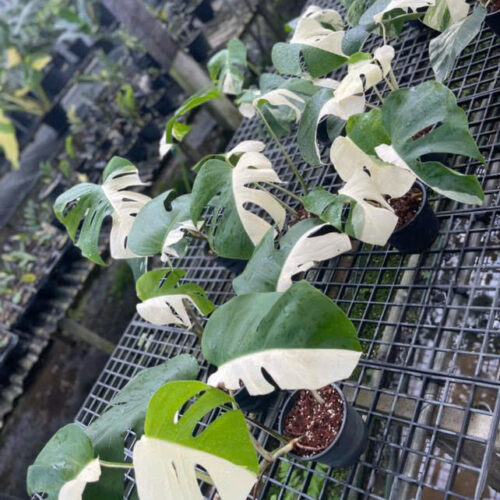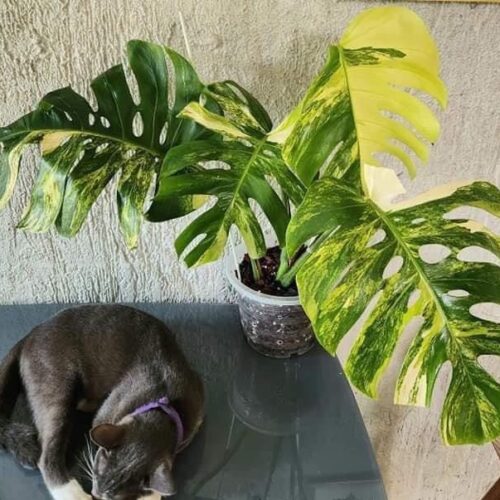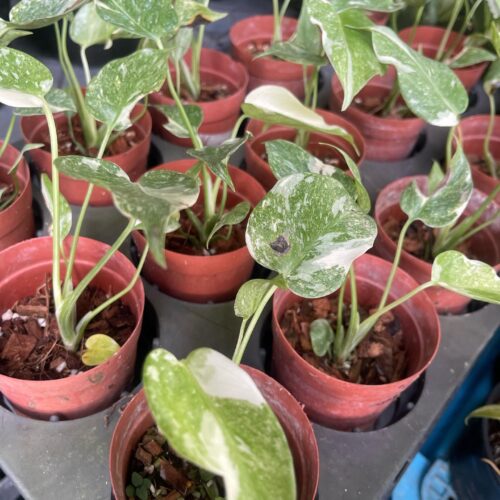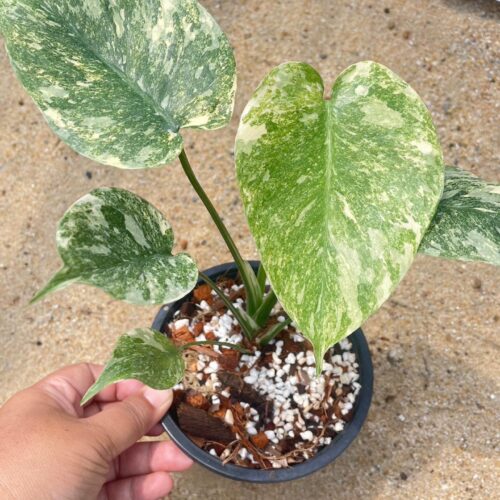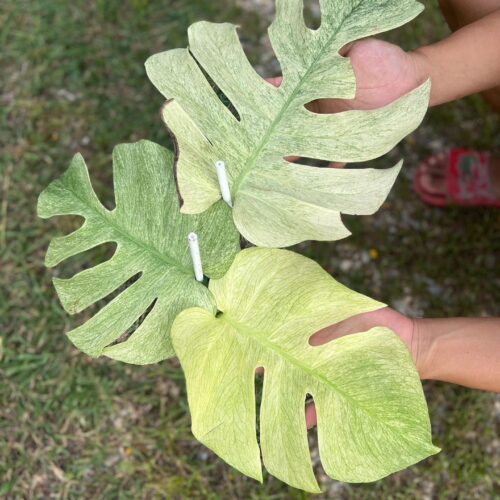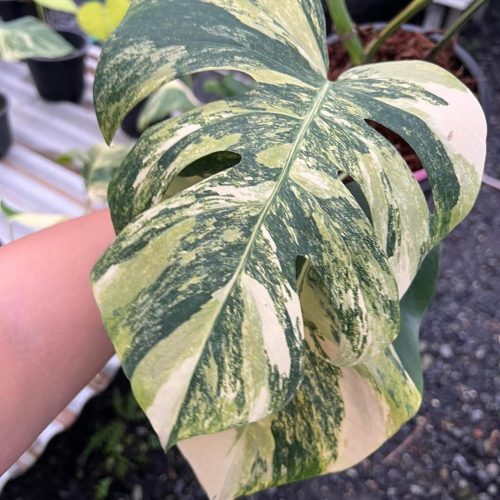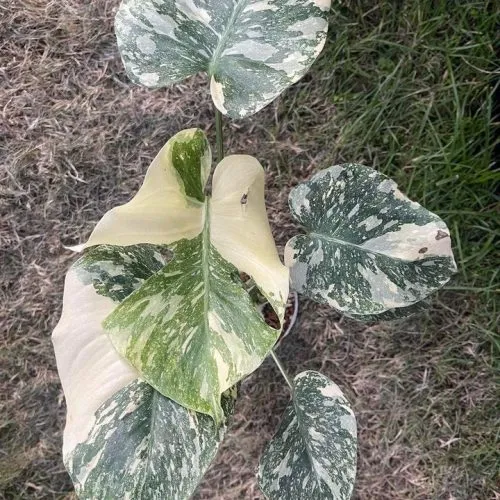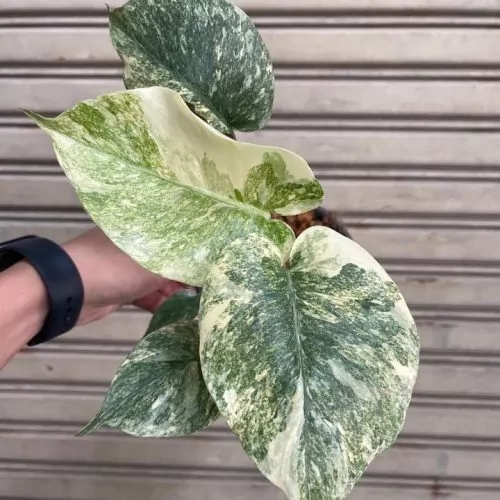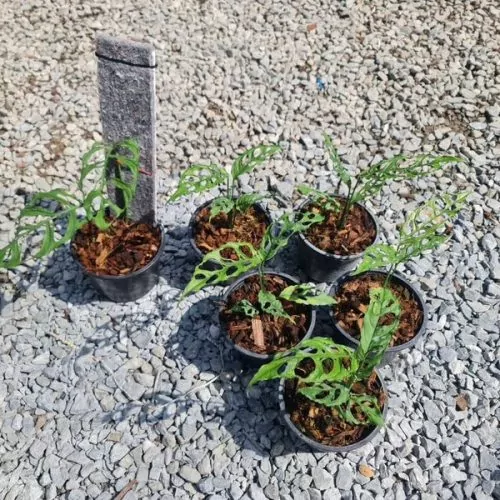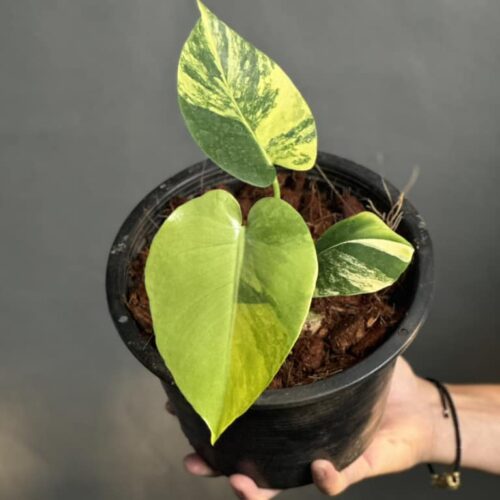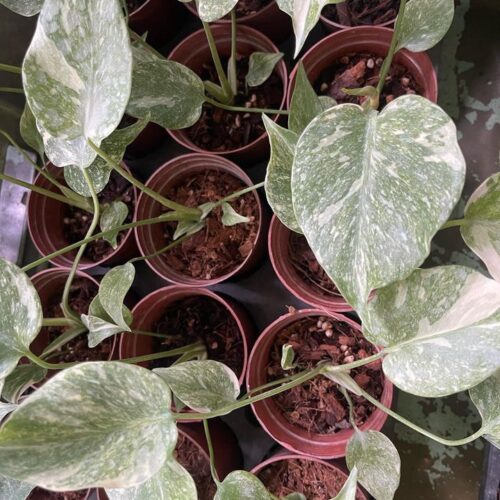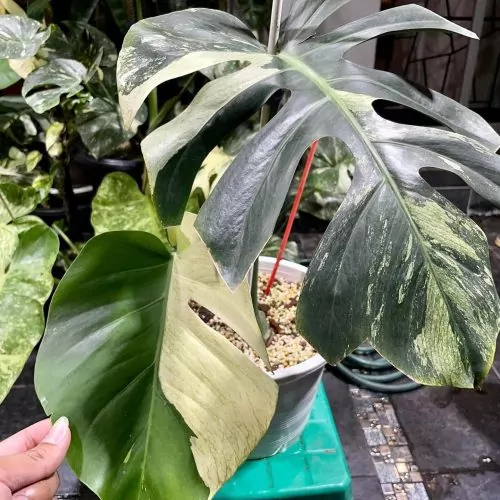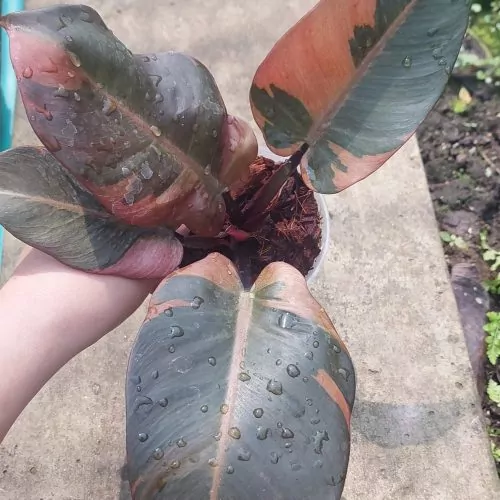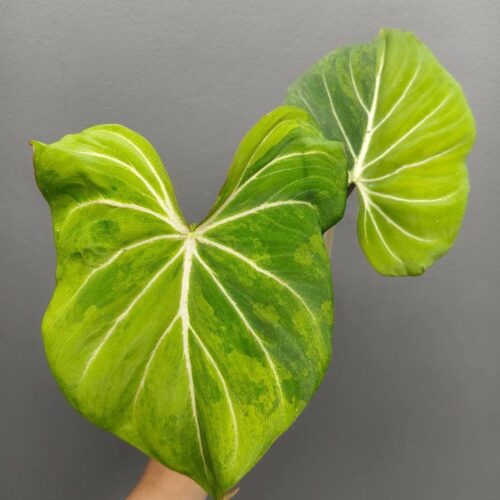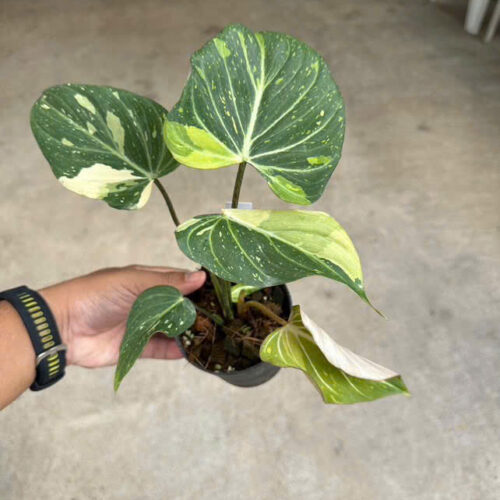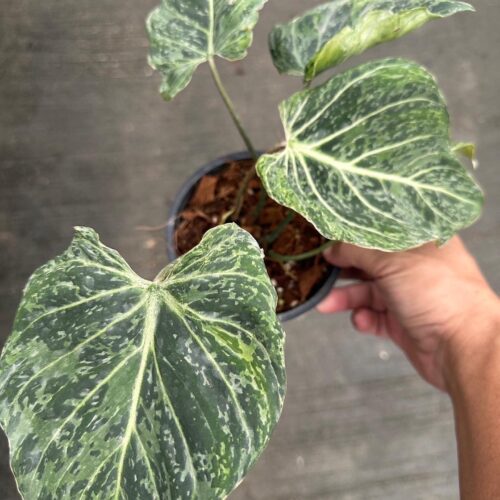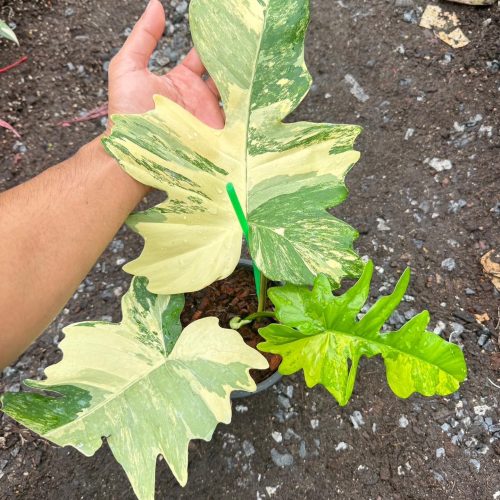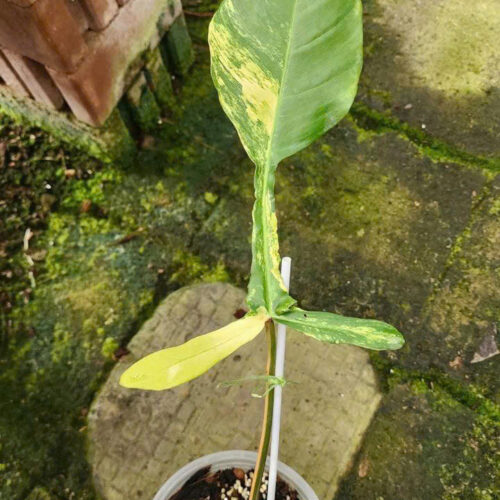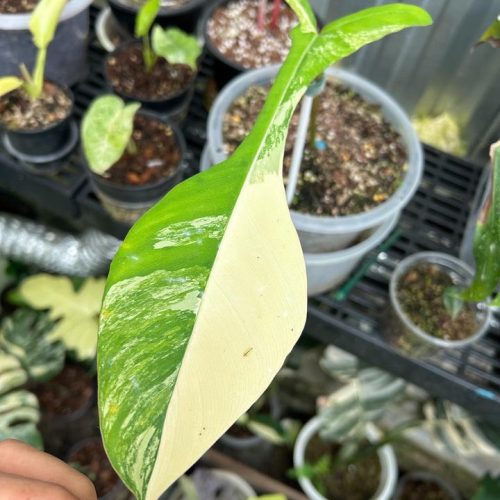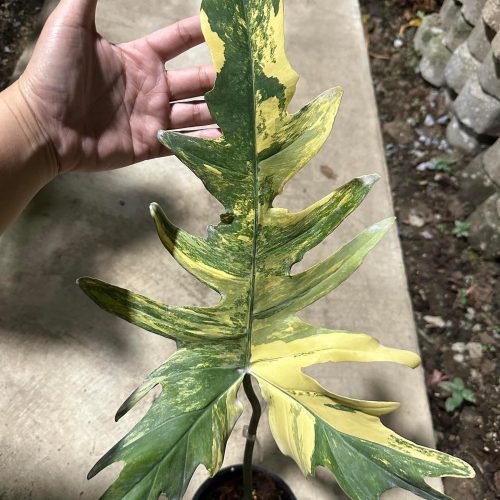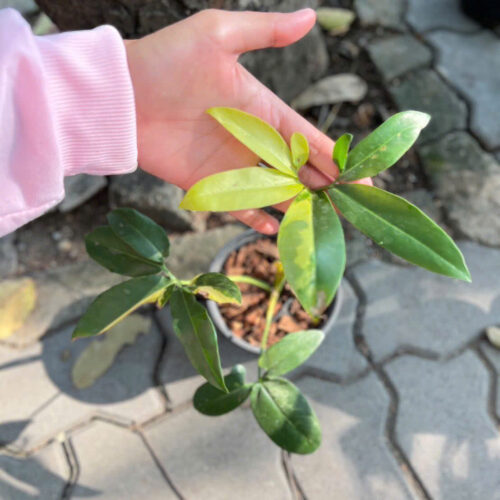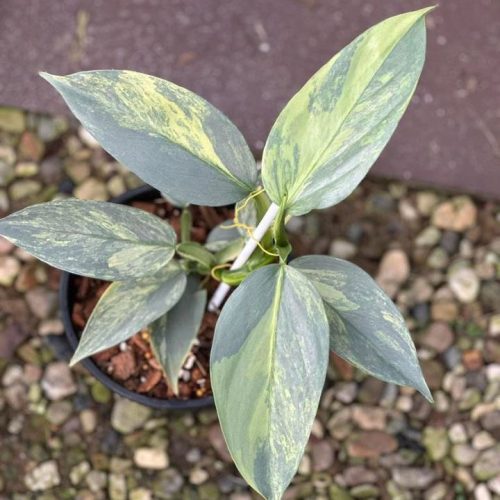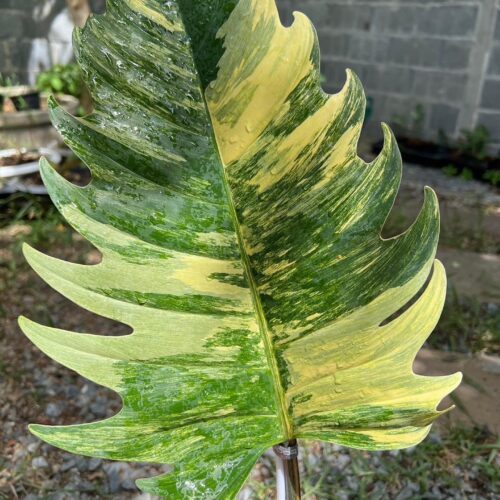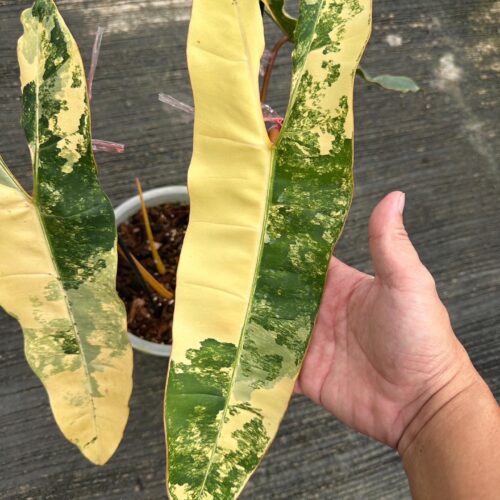The Philodendron Ring of Fire Variegated is a highly sought-after houseplant known for its striking, multicolored foliage. This guide will provide you with everything you need to know to grow and care for this beautiful Philodendron variety successfully.
Introduction
The Philodendron Ring of Fire Variegated is a member of the aroid plant family, which includes popular varieties like Monstera, Anthurium, and Aglaonema. Native to the tropical rainforests of Central and South America, this plant is prized for its unique, variegated leaves that display a stunning combination of green, white, red, and orange hues. Similar to Syngonium and Epipremnum, the Philodendron Ring of Fire Variegated is not only beautiful but also relatively easy to care for.
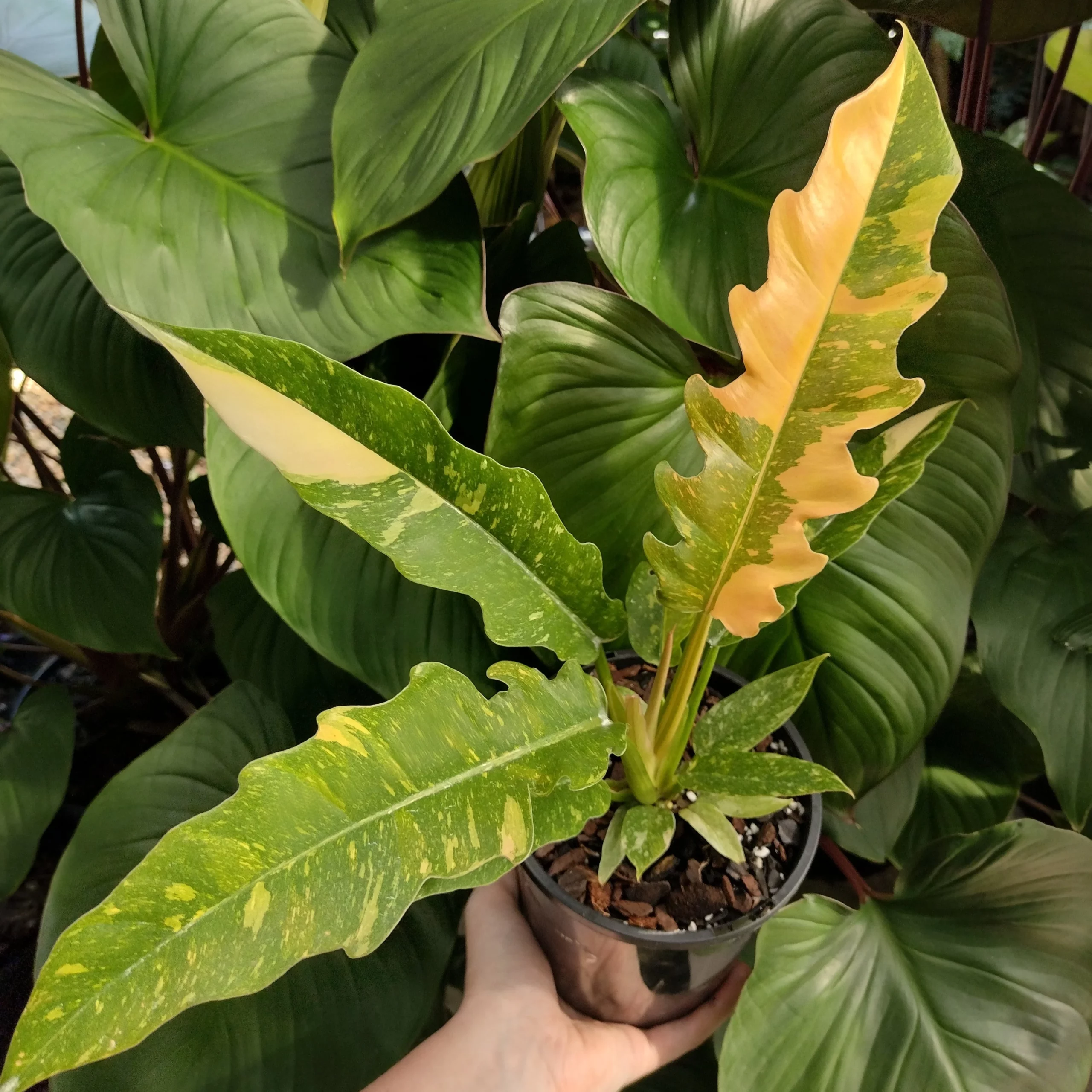
1. Origins and History
The Philodendron Ring of Fire is a cultivar of the Philodendron Erubescens species, which is native to Colombia and other parts of tropical South America. This particular variety was produced through selective breeding to achieve its signature foliage, characterized by lemon-lime colored sections contrasting against dark green. To explore more about the diverse species of Philodendrons and their native habitats, you can refer to our extensive guide
Discovery and Rise in Popularity
The Ring of Fire cultivar first emerged in the plant trade sometime in the early 2010s. Its striking variegated leaves quickly captured the attention of houseplant enthusiasts. Over the next few years, its popularity steadily grew thanks to social media and the houseplant boom. Now it’s one of the most sought-after Philodendron varieties on the market.
Taxonomy and Classification
The Philodendron genus contains around 500 species, many of which are popular houseplants. Ring of Fire is part of the Erubescens group, which are vines capable of growing quite large in the wild. However, this variety remains relatively compact as a container plant.
2. Distinctive Features and Characteristics
The Philodendron Ring of Fire is defined by its vibrant, eye-catching foliage. Here are some of its most notable features:
Variegated Leaves
The leaves showcase hues of lime green, yellow, and creamy white against deep green. This variegation occurs along the veins in elongated patches resembling flames, hence the name Ring of Fire. The striking color pattern is the plant’s main appeal.
Compact Growth Habit
Unlike its vining relatives, the Ring of Fire grows in a compact, bushy form reaching 2-3 feet tall and wide. New leaves emerge from the center while older leaves remain along the stem as the plant matures. The manageable size makes it suitable for containers.
Glossy Texture
The leaves have a smooth, almost plastic-like texture that gives them a leathery, glossy appearance. They can grow up to 12 inches long in mature plants.
Trailing Stems
As a vine-like Philodendron, its stems tend to trail or hang over the sides of planters. Aerial roots may also emerge along the stems which can be trained back into the pot.

3. Ideal Growing Conditions
Providing proper care helps keep the Philodendron Ring of Fire healthy and looking its best. Here are some key conditions to provide this plant:
Warm Temperatures
Native to the tropics, Ring of Fire thrives in average room temperatures between 65-80°F year-round. Avoid excessive cold or heat.
Bright, Indirect Light
Place this Philodendron near an east or west facing window where it will receive 3-4 hours of bright, filtered sunlight daily. Direct hot sun will scorch its leaves. Too little light causes fading variegation. For detailed information on the lighting needs of Philodendrons, check out our in-depth guide
High Humidity
These tropical plants prefer 50% humidity or higher. Increase moisture levels around the plant by using a pebble tray, humidifier, or grouping plants together. Mist the leaves regularly as well.
Well-Draining Soil
Use a well-aerated potting mix that drains easily yet retains some moisture. Add perlite or orchid bark to improve drainage. Let the top inch of soil dry out between waterings.
“Unleash the beauty of nature in your home with the exquisite Philodendron Ring of Fire Variegated! Click the link to embrace this stunning addition to your plant collection. Don’t wait, bring home the vibrant elegance today!”

4. Unique Care Needs
Caring for a Philodendron Ring of Fire involves a few specific considerations:
Stabilizing Support
Due to its vining nature, this plant benefits from a stake, moss pole or nearby furnishings to gently climb and cling onto. This keeps growth upright and prevents drooping. To understand more about supporting vining Philodendrons and encouraging healthy growth, see our detailed insights in “The Ultimate Guide to Philodendron Care for Healthy and Vibrant Plants”
Occasional Pruning
Prune off any leggy growth or damaged leaves to encourage bushier new growth. Also, pinching off the growing tips can promote fuller foliage. Only prune using sterile tools.
Increased Feeding
To maintain the striking variegation, feed monthly during spring and summer with a balanced, diluted liquid fertilizer. Reduce feeding in fall and winter.
Priority on Variegation
When new leaves emerge mostly green, move the plant to a brighter location. Greater light exposure will increase variegation in subsequent leaves. All-green offshoots should also be removed.
Philodendron species are the most sought after by aroid plant lovers
6. Propagation and Pests
Like many houseplants, the Philodendron Ring of Fire can be propagated at home through cuttings. It can also fall victim to some common pests:
Propagation by Stem Cuttings
Take 4-6 inch cuttings in spring or summer. Place in water or moist soil until roots develop. Once rooted, plant in a pot with drainage. New plants retain the leaf variegation.
Potential Pests
Watch for common pests like mealybugs, aphids, gnats and scale which can leave sticky deposits, deform leaves or cause yellowing. Isolate and treat infestations promptly.
Diseases
Overwatering can lead to root rot. Leaf spot disease may occur in humid conditions with poor air circulation. Improve growing conditions and remove affected parts to resolve.

7. Display and Design Ideas
The colorful Philodendron Ring of Fire makes a fabulous accent plant in many home and office spaces. Here are some tips for showing it off:
Let it Trail
Let stems trail down from shelves or hang the plant in a macrame hanger. The draping stems and vines create a beautiful, natural effect.
Group with Other Plants
Combine with other tropical varieties like pothos, prayer plants or ferns. The variegated leaves will stand out alongside green foliage.
Use as a Focal Point
Place the plant prominently in a corner of the living room or entryway where its foliage becomes a unique focal point. The vibrant colors will draw attention.
Elevate Indoors and Outdoors
Situate pots on plant stands or pedestals to bring the colorful leaves closer to eye-level. Use in patio containers during warm months for added seasonal interest.
The eye-catching Philodendron Ring of Fire lives up to its name with showy, fiery variegated foliage. Provide this tropical plant with bright, warm conditions along with gentle support and it will thrive as a captivating houseplant or garden accent. With its manageable size and easygoing nature, the Ring of Fire Philodendron is sure to be a winner in any plant-lovers collection.

